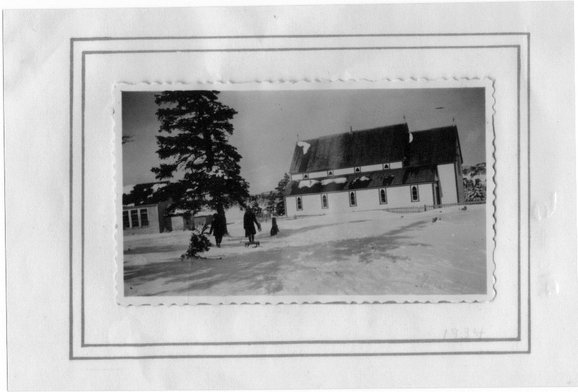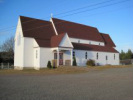HISTORY
It has been said many times that "the church is the people." Sometime in the 1840's, Joseph Cleal (b. 1825 Bridgeport, England) moved with his wife Mary Hooper from Rock Harbour to Birchy Island, Mortier Bay gainining the distinction of its first settlers. Stories circulate that before this some people, particularly from Rock Harbour, would spend the winters there in winter houses. They referred to the area that is known as Creston today as the Peak (variant of forepeak of a ship ; also, the Head of the Bay - a name still used in its proper form today) and were content to spend the winters there in more sheltered environs where wood and wildlife were more accessible.
Meanwhile, the Cleals were followed permanently by people bearing prominent names including Bow (George Bow who died in 1885 has the oldest tombstone in St. Michael and All Angels` Cemetery), Clarke, Stevens, Hooper, Hodder, Crocker, Rogers, and Legge. These determined, resourceful, creative and innovative people were of deep faith as evidenced in letters witten by the Stevens and Hodder families that were often referenced and qualified with the expressions "God willng" and "Please God." Indeed, all good things were of God and life's hardships and tragedies were left in trust to His omniscient and all loving nature.
The faith of the pioneers gave rise to the building of a school chapel. Gerald Barter writes: "The first formal congregation began with the the building of a school chapel. Although no definite date is available for construction of the chapel, a missal* that still exists was donated to the chapel by the church Ecclesiastical Association in September of 1886" (cited in Newfoundland Churches, 1997)
*Missal - a book containing the prayers and rites used by a minister in celebrating services over the course of the year.
ST. Michael and All Angels`Anglican Church, Creston South, Newfoundland is one of the oldest churches on the Burin Peninsula.


